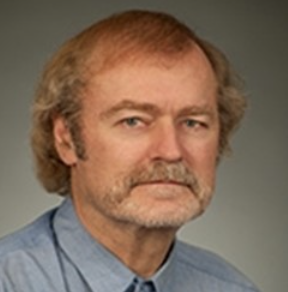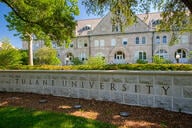You have /5 articles left.
Sign up for a free account or log in.

John Gaski
University of Notre Dame
The University of Notre Dame is acknowledging that the words of one of its professors appeared in the alleged Buffalo, N.Y., killer’s racist screed.
“We are appalled that a 2013 article by John Gaski, an associate professor [of marketing] at Notre Dame, was cited by the perpetrator of the heinous murders of innocent people in Buffalo,” Joel Curran, university spokesperson, said in a public statement last week. “Whatever Professor Gaski’s intentions, we deeply regret that his words were used to support a doctrine of racial hatred. We urge all, at Notre Dame or elsewhere, to speak and act in ways that never give harbor to hatred and violence.”
The statement followed reports that Payton Gendron, the 18-year-old white man who has been charged with first-degree murder in the killings of 10 Black employees and patrons of a Buffalo supermarket on May 14, included Gaski in a 180-page diatribe posted online. Specifically, Gendron cited a 2013 opinion piece, “A Discussion on Race, Crime and the Inconvenient Facts,” published by Investor’s Business Daily, in which Gaski accuses “race hustlers” and “race baiters” of falsely “engendering a climate of racist danger for black citizens.”
Gendron was apparently interested in a portion of the article in which Gaski discusses “interracial violent crime,” including this statement: “Because the number of white-on-black rapes is so low nationally in any given year, the ratio ranges from 100-to-1 to infinity. Liberal, politically correct feminists need to reflect on that one. If these interracial crime ratios were randomly based, they would be uniform—that is, 1-to-1—for the two racial groups.”
Gaski, who declined an interview request, said in a separate public statement last week that it’s “sobering that a portion of an article I wrote in August 2013 was cited in the document composed by the Buffalo shooting suspect. It was, of course, never my intent to in any way incite violence—in fact, just the opposite. I also am appalled and deeply distressed that the information I provided is associated in any way with this young man’s horrific actions.”
Gaski’s cited article provides a single, undated data source: “Department of Justice’s Criminal Victimization in the United States, ‘Victims and Offenders.’” Gaski did not immediately provide a more specific reference when asked last week. But his statements appear to be an extrapolation of data from earlier versions of the National Crime Victimization Survey. Some years list the share of sexual assaults with Black victims and white offenders to be 0 percent of total sexual assaults.
In any case, presenting such data as Gaski did ignores that offender race is unavailable or unlisted in many rape cases (in 25 percent of cases with Black victims in 2008, for instance); that white offenders are responsible for the overwhelming majority of rapes where offender race is known; that white offenders do assault Black victims, but Black men who assault white women have been shown to receive more serious criminal charges and longer sentences; and other crucial framings and context.
Moreover, Gaski’s article minimizes the risk of racist violence against people of color, the kind seen in Buffalo and in other attacks that had already occurred by 2013, when he was writing. The piece also plays into some of the most insidious and dangerous stereotypes about Black men and violence.
Notre Dame declined additional comment on the matter.
Gaski isn’t the only academic named in Gendron’s document. Others include psychologists Richard Lynn and the late J. Philippe Rushton, who both served as presidents of the Pioneer Fund, which was established in 1937 to promote “race betterment.” Unlike Gaski’s article, the cited works by Rushton and Lynn (which assert there is a biological link between race and violence) were peer reviewed. They’ve since been criticized as fundamentally flawed or retracted. Yet Rushton and Lynn continue to influence certain corners of academe and nonacademics alike—including Gendron and other peddlers of the so-called great replacement theory about the white race. (The University of Ulster in Northern Ireland took away Lynn’s professor emeritus status in 2018 over concerns about his views. The University of Western Ontario’s psychology department, Rushton’s longtime academic home, said in 2020 that “Rushton’s legacy shows that the impact of flawed science lingers on, even after qualified scholars have condemned its scientific integrity.”)
Lynn told Inside Higher Ed in 2018 that he and the Pioneer Fund continued to support the concept of eugenics, including such “relevant” topics as “intelligence, personality, genetics.” Gaski wrote his article to advance what he deemed to be “inconvenient facts.” But for those concerned about the link between what’s been called scientific racism and real-world hate and violence, how should academe respond?
Stacy Farina, assistant professor of biology at Howard University and co-author of a recent Science for the People essay focused on Rushton’s relationship with the late biologist E. O. Wilson, said, “We need to have brutally honest conversations about the ways in which our disciplines have fostered scientific racism and contributed to white supremacy. We must acknowledge and uplift antiracist work done by Black, brown and Indigenous scholars. There is an urgent need for us to widely incorporate antiracism into our science and science communication.”





